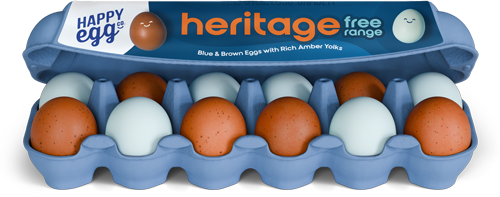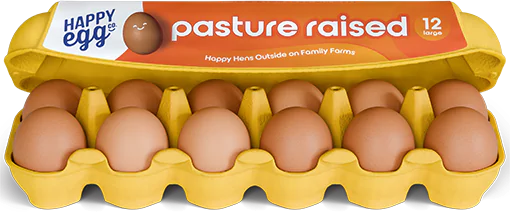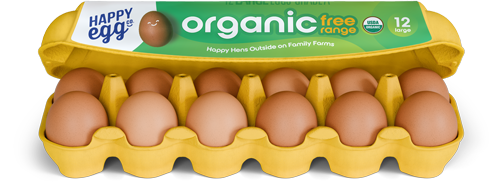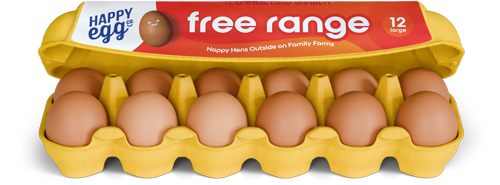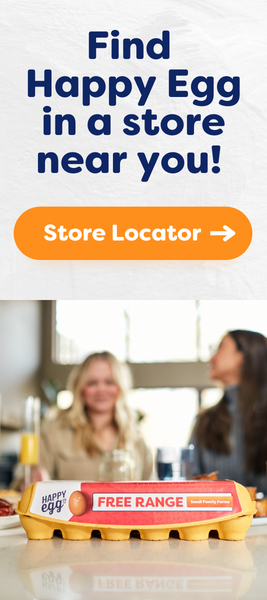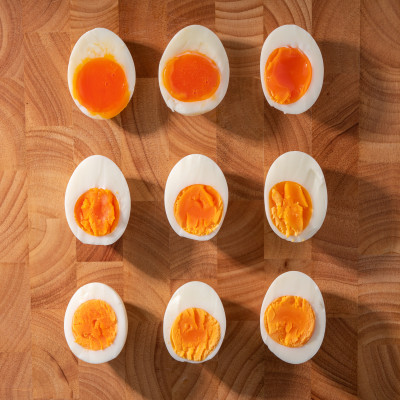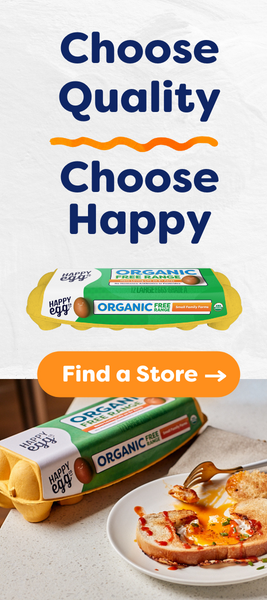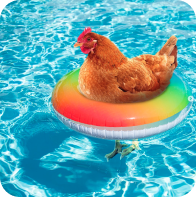Fried eggs are a quick and easy breakfast that isn’t just delicious, but nutritious too. To help you make the perfect fried egg, we’ve put together this article to answer all of your fried eggs questions, from what type of pan to use, to cook times, and more!
Just remember, whether you like your fried eggs sunny-side up, or over-easy, the first thing to remember when learning how to perfectly fry an egg, is to always start with a high-quality, fresh egg, like a Happy Egg!
The best pan for frying an egg
Using the right type of pan to fry an egg makes all the difference. Because eggs are so delicate, most home chefs love using nonstick pans for their eggs. Nonstick pans aren’t just efficient for cooking eggs, but cleaning them is a breeze too.
The type of nonstick pan you use for frying an egg depends on the number of eggs you like to fry at a time. If your go-to egg breakfast is one egg, opt for a single egg frying pan. These efficient egg pans are available in three and four inch sizes.
If you like two fried eggs, go for an eight or nine inch nonstick pan. We've got our eyes on this non-stick cast iron enamel pan from Cravings by Chrissy Teigen!
Oil vs butter
One of the first questions people have when learning how to perfectly fry an egg, is whether you should use oil or butter for frying. Both have their benefits, but which fat you use to fry your eggs depends on how you like the final product.
Using olive oil to fry eggs will make the egg white extra crispy - in a good way. If you like your eggs with a creamier egg white, choose butter.
Using a lid vs. not using a lid
Most fried egg recipes will tell you that using a lid to cook fried eggs is a must. Placing a lid on the pan helps cook the egg with steam, while preventing it from overcooking. Trying to fry eggs without the help of a lid will result in a longer cook time, which may burn the egg whites.
A step-by-step guide for a perfectly fried egg
Step 1
Crack the egg, or eggs, into individual bowls. This will make it easy to retrieve any pieces of shell that may break off. Cracking eggs into individual bowls, rather than on the side of your nonstick skillet, also prevents you from getting any excess egg on the pan.
Step 2
Heat the pan on medium heat and add the olive oil or butter. Let the pan warm-up for about a minute before adding the egg.
Step 3
Gently pour the egg into the pan. You’ll know the egg white is cooking when it begins to whiten around the edges. This usually takes a minute or so.
Step 4
As the egg white begins to cook, cover the pan with the lid, and lower the heat to medium-low. Covering the eggs will help cook the egg white with steam, but keep the yolk soft and runny.
Step 5
If you like sunny-side up eggs, cook the egg for 4 minutes. If you prefer the yolk a little more set, cook the egg for 5 minutes. Letting the egg fry for 6 minutes will give you a hard yolk.
How make over-easy, over-medium, and over-hard eggs
If you like your fried eggs over easy, gently flip the eggs when the egg white has completely set. You’ll want to make sure the egg white is stable enough to lift it with a spatula. Cook the egg on the other side for another minute if you want over-easy eggs, two minutes for over-medium eggs, and three minutes for over-hard eggs.
It's as easy as that!


